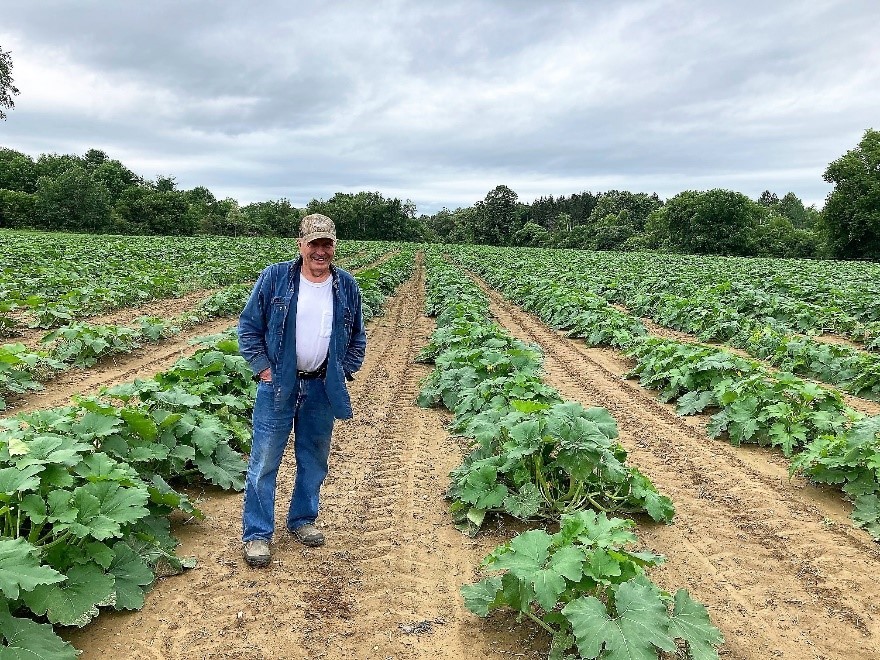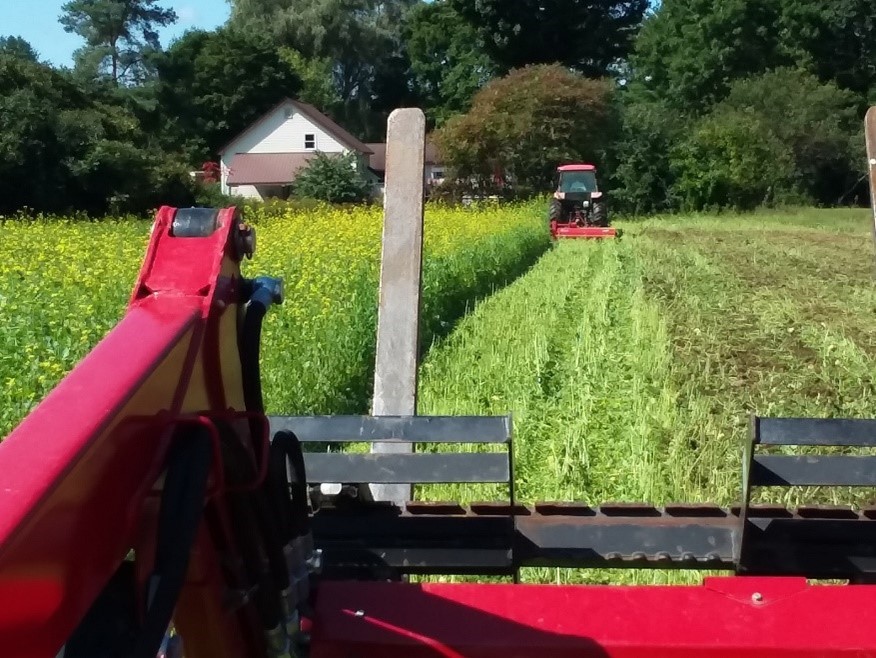By Becky Maden, UVM Extension
In the 1970’s and 80’s, Keith Armstrong was a national snowmobile champion, and worked full time for the dairy industry while running the farm on the side. Upon retirement, rather than traveling or relaxing, he decided to do what he truly loved—which is working from dawn to dusk growing high-quality produce. Now in his 80’s, Keith manages a farm located south of Bennington in the town of Pownal with help from his grandchildren. Armstrong Farm’s primary crops are maple syrup, sweet corn, and pumpkins, but grows a bit of everything. Nearly all the farm’s products are sold through a small, seasonal stand on Route 7, which has been in Keith’s family since 1868. In October, the field next to the stand is piled high with pumpkin displays, luring leaf peepers to pull over, take photos, and hopefully purchase pumpkins and other seasonal goodies.
Although Keith is already an experienced farmer with a deep understanding of soil health, he is enthusiastic and innovative when it comes to new practices. In 2021, while on a visit with Keith, we mentioned a workshop co-hosted by UVM Extension and the Vermont and Vegetable Berry Growers Association on the use of a natural biofumigant called high glucosinalate mustard (HGM) as a cover crop. Although Keith couldn’t attend the workshop, he was immediately intrigued, calling the next day and saying, “I know a good thing when I hear about it!” Within a week, we had ordered and hand spun five acres of HGM seed. And within six weeks, he called again, exclaiming how the stand was blooming and there wasn’t a weed in sight. Together, Keith and I flail mowed and then quickly incorporated and sealed in the HGM, according to recommendations for optimizing its biofumigation potential.
This past season, Keith grew sweet corn on the 5 acres where the HGM had been planted, and it turned out to be one of his most productive sweet corn crops. We both attributed the success of the crop to three things; reduction of weeds due to the HGM, improved soil fertility following a cover crop, and accurate fertilization with chicken manure the previous fall. But Keith wasn’t ready to pause to enjoy success; in late July 2022, thanks to support from the CWIP grant, he seeded five acres of HGM and five acres of peas and oats. The peas and oats have grown vigorously and should provide even more biomass and soil health benefits than he experienced with the mustard.
Although Keith is in the process of transferring the farm to the next generation, his enthusiasm for cover cropping and soil health is vibrant. We are excited to continue partnering with Keith, learning from his experience, and helping him steward the soil of his farm.

Keith Armstrong in a field of pumpkins

Incorporating the high glucosinalate mustard (HGM), which was grown as a cover crop
